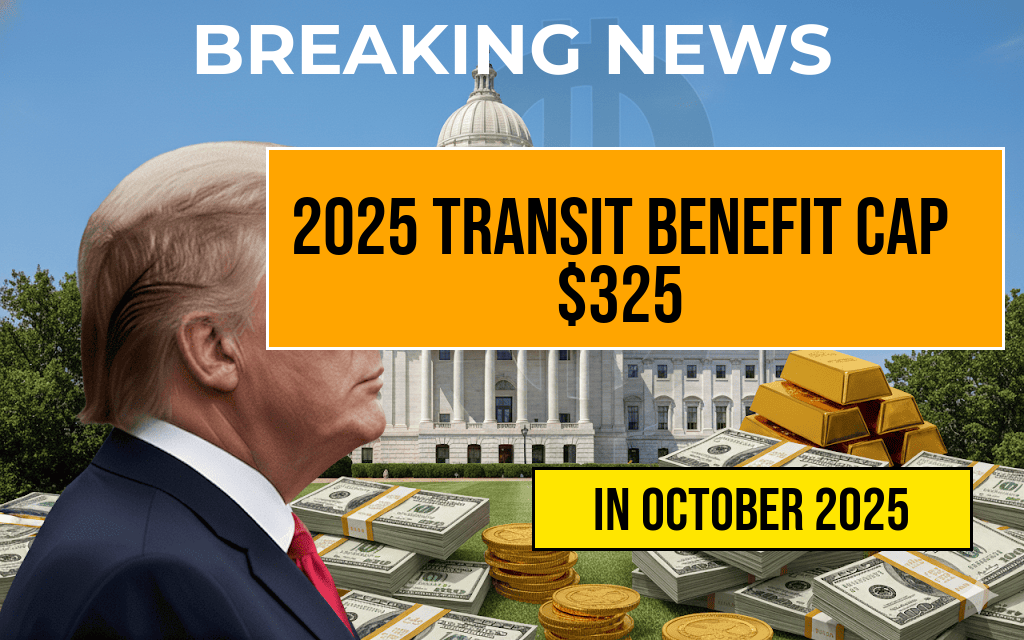The U.S. Department of the Treasury has announced that the 2025 transit benefit cap will be set at $325 per month, marking a modest increase from previous years. This cap limits the maximum pre-tax amount employees can set aside for commuting expenses through employer-sponsored transit benefit programs. For millions of commuters relying on public transportation, this adjustment could influence their monthly savings and commuting budgets. Understanding how the cap affects tax advantages and calculating potential savings can help employees optimize their transit benefits for the upcoming year.
Understanding the Transit Benefit Cap and Its Impact
The transit benefit cap is a federal regulation that defines the maximum amount employees can exclude from taxable income when using pre-tax dollars for transportation-related expenses. For 2025, this limit rises to $325 per month, up from $300 in 2024. This adjustment aligns with inflationary pressures and policy updates aimed at encouraging public transit use while providing tax relief to commuters.
Employers often offer transit benefit programs as part of their employee benefits package, allowing workers to allocate pre-tax dollars toward transit passes, vanpooling, or other commuting costs. The cap effectively sets a ceiling on the tax benefits employees can receive, though any expenses exceeding this amount are typically paid with after-tax dollars.
Implications for Commuters and Employers
- For employees: The increased cap allows for higher pre-tax contributions, potentially reducing taxable income and increasing take-home pay for regular transit users.
- For employers: Adjusting benefit offerings to reflect the new cap may involve administrative updates and communications to ensure employees maximize their benefits.
While the cap is set at $325, some transit agencies charge less for monthly passes, meaning many employees may not reach the limit. However, those with higher transportation costs—such as commuters using express services or multiple transit modes—stand to benefit from the increased cap.
Calculating Monthly Savings with the New Cap
Employees can determine their potential savings by comparing their transit expenses with the cap limit. The federal tax advantage comes from the ability to set aside pre-tax dollars up to the cap, reducing taxable income and, consequently, tax liability.
Sample Calculation
| Monthly Transit Expense | Contribution (up to $325) | Estimated Tax Savings (Assuming 22% tax rate) |
|---|---|---|
| $200 | $200 | $44 |
| $325 | $325 | $71.50 |
| $400 | $325 | $71.50 |
In this example, an employee spending $200 monthly on transit benefits can save approximately $44 annually in taxes, while those with expenses at the cap of $325 can save about $71.50. Expenses beyond the cap are paid with after-tax dollars, providing no additional tax benefit.
Other Considerations and Future Outlook
As transportation modes evolve and cities expand transit infrastructure, the significance of the $325 cap may shift. Policymakers are debating whether to further increase the limit to accommodate rising transportation costs and promote sustainable commuting options. The IRS periodically reviews these caps, often adjusting them for inflation, as seen in the 2025 update.
Employees should review their transit expenses annually to determine if maximizing pre-tax contributions aligns with their commuting costs. Additionally, some employers may offer flexible benefits or incentives to encourage public transit use, which can complement federal tax advantages.
Resources for Commuters
- Public transport in the United States – Wikipedia
- Forbes: Understanding Tax Benefit Caps and Employee Savings
By staying informed about the updated transit benefit cap and calculating potential savings carefully, employees can better leverage their benefits for a more affordable and sustainable commute in 2025.
Frequently Asked Questions
What is the new Transit Benefit Cap for 2025?
The Transit Benefit Cap for 2025 has been set at $325 per month, allowing employees to save on commuting costs through pre-tax benefits.
How does the 2025 Transit Benefit Cap affect my monthly savings?
The cap limits the amount you can contribute pre-tax towards public transportation expenses to $325 monthly, maximizing your tax savings up to this limit.
Who is eligible for the Transit Benefit in 2025?
Eligible employees typically include those who regularly use public transit for commuting and work for organizations that participate in transit benefit programs.
How can I calculate my monthly savings using the new cap?
You can estimate your monthly savings by multiplying your commuting expenses up to $325 by your tax rate, since contributions made within the cap are pre-tax.
Are there any limitations or exceptions to the 2025 Transit Benefit Cap?
Yes, some employers may have additional restrictions, and certain transit expenses outside the scope of eligible costs might not qualify for the benefit.







